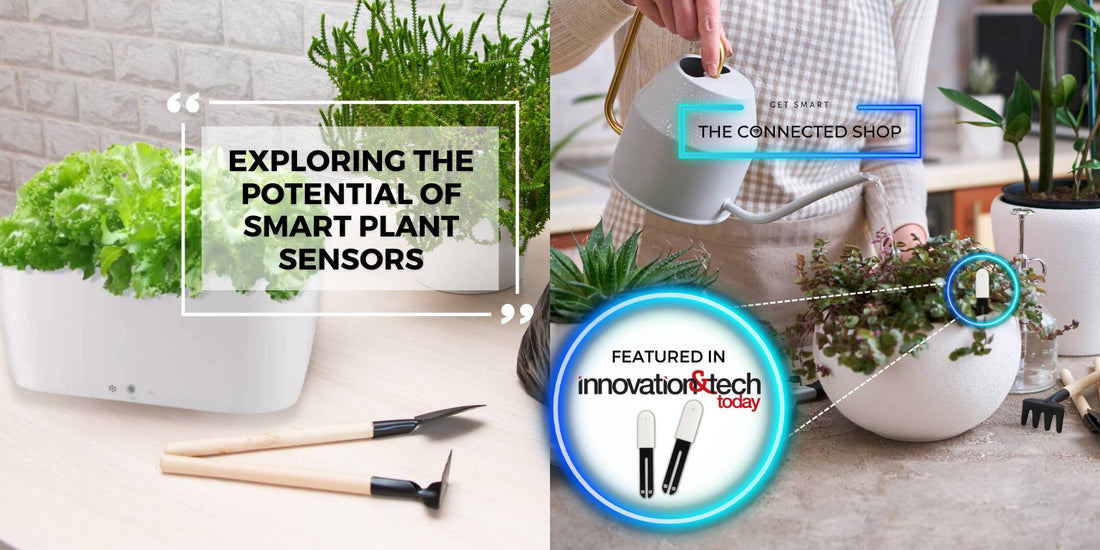Gardening, an age-old practice cherished by many for its therapeutic benefits and connection to nature, is undergoing a technological revolution that promises to transform it into a more efficient, productive, and sustainable activity. As we step into the future, the integration of technology into our gardens is becoming increasingly prevalent, with smart plant sensors leading the charge. These innovative devices, small yet powerful, are redefining the way we interact with our plants, offering insights and guidance that were once the domain of experienced gardeners or left to chance.
Join us as we delve into the capabilities of smart plant sensors, examining how they monitor soil moisture, light exposure, temperature, and more to ensure optimal plant health. We will also consider the broader implications of this technology, from reducing water usage and preventing plant diseases to fostering a more sustainable and mindful approach to gardening. The future of gardening is here, and it's smarter than ever. Let's discover how these intelligent devices are paving the way for a greener, more efficient, and more connected gardening experience.
How Smart Plant Sensors are Redefining Plant Care
Smart plant sensors represent a leap forward in gardening technology, merging the art of horticulture with the precision of modern tech to create an optimally balanced environment for plant growth. These devices, small yet powerful, are engineered to monitor various environmental conditions that directly impact plant health, such as soil moisture, temperature, light intensity, and nutrient levels. By providing real-time data and insights, smart plant sensors enable gardeners to make informed decisions about when to water, fertilize, or adjust the placement of their plants for optimal sunlight exposure.
Key Features and Functions
Soil Moisture Monitoring: One of the most fundamental aspects of plant care is ensuring optimal soil moisture. Smart plant sensors can provide precise readings of soil moisture levels, helping prevent both overwatering and underwatering.
Light Intensity Detection: Light is crucial for plant growth. These sensors can measure the amount of light your plants receive, advising you on whether you need to move them to a sunnier spot or provide artificial lighting.
Temperature Sensing: Plants thrive within specific temperature ranges. Smart plant sensors can alert you if the surrounding temperature is too high or too low for your plants, enabling timely adjustments to their environment.
Nutrient and pH Level Monitoring: Some advanced sensors can also assess soil nutrient content and pH levels, providing valuable information for optimizing plant health and growth.
Types of Smart Plant Sensors
Plant and Flower Smart Sensors: These are typically stake-like devices inserted into the soil near your plant. They connect to an app, offering detailed insights and care recommendations for your plants based on the data they collect. They are versatile and can be used with a wide range of indoor and outdoor plants.
Self Watering Smart Planting Pot: Beyond just monitoring, this innovative solution integrates sensor technology with a self-watering mechanism. The pot automatically adjusts water delivery based on the sensor readings, ensuring that plants receive the right amount of water without manual intervention. This system is particularly beneficial for indoor plants and busy individuals who may not always remember to water their plants.
Choosing the Right Smart Plant Sensor
When selecting a smart plant sensor, consider the specific needs of your plants and your own lifestyle. For those new to gardening or with busy schedules, a self-watering smart planting pot might offer the greatest convenience. In contrast, gardening enthusiasts might prefer the detailed data and specific care recommendations provided by standalone plant and flower smart sensors.
By integrating these smart devices into your gardening routine, you can not only simplify plant care but also deepen your understanding of your plants' needs, leading to a more rewarding and successful gardening experience.
Case Studies and Success Stories: The Connected Shop's Impact Through Innovation
One of the most compelling ways to understand the value and potential of smart plant sensors is by looking at real-life applications and achievements. Our Plant and Flower Smart Sensors, provide a perfect example of how smart technology is revolutionizing gardening practices.
Our Plant and Flower Smart Sensors stood out to Innovation & Tech Today for their advanced features and user-friendly design, which cater to both seasoned gardeners and novices alike. The feature in the Spring Tech Guide highlights the sensors' ability to transform ordinary gardening into a data-driven, precision activity, enhancing plant health and simplifying the gardening process.
How Our Smart plant Sensors Make a Difference
Our smart plant sensors have empowered gardeners by offering detailed, easy-to-understand insights into their plants' needs, significantly improving plant care and garden management. Here are a few ways in which these sensors have made a meaningful impact:
Enhanced Plant Health and Longevity: By providing accurate data on soil moisture, light, and temperature, the sensors help gardeners adjust their care routines to prevent issues like overwatering or insufficient sunlight, leading to healthier plants and longer lifespans.
Water Conservation: The moisture monitoring feature has been instrumental in reducing water waste. Gardeners can water their plants precisely when needed, contributing to more sustainable gardening practices.
Educational Value: For novices and experts alike, the sensors serve as an educational tool, enhancing their understanding of plant care and helping them cultivate a deeper connection with their garden.
Community Impact: Beyond individual gardens, our smart plant sensors have found applications in educational settings and community gardens, spreading the benefits of smart gardening and fostering a community of tech-savvy garden enthusiasts.
Keeping Things Running Smoothly: Maintenance Tips for Smart Sensors
Installing and maintaining smart plant sensors can be straightforward, ensuring that you reap the full benefits of this innovative technology. Start by carefully selecting the location for your sensor; it should be placed in the soil near the plant's roots for accurate soil readings and unobstructed by leaves or debris for light measurements. Follow the manufacturer's instructions for setup, which typically involves connecting the sensor to your smartphone or home network. Regular calibration, if required by the device, can enhance accuracy. Additionally, ensure that the sensor's firmware is routinely updated to take advantage of the latest features and improvements.
For maintenance, keep the sensor clean and free of soil or water clogs, especially the sensor probes, to prevent any interference with its readings. Check battery levels periodically and replace them as needed to avoid data interruptions. If your sensor is designed for outdoor use, verify its weather resistance is intact, especially after extreme weather events. By attending to these details, you'll extend the lifespan of your device and ensure that it provides reliable, actionable insights to help your garden thrive.
As we conclude our exploration of the future of gardening through the lens of smart plant sensors, it's clear that these devices are not just a fleeting trend but a significant step towards more conscious and efficient gardening. By embracing the potential of these sensors, gardeners of all levels can unlock a new dimension of plant care, armed with data and insights that were once beyond reach. Whether it's achieving the perfect moisture balance, optimizing light exposure, or ensuring the right temperature, smart sensors equip us with the tools to nurture our plants with precision and care.
The journey into smart gardening is an invitation to merge tradition with innovation, grounding our gardening practices in respect for nature while harnessing the benefits of technology. As we look ahead, the integration of smart sensors in gardens worldwide promises not only healthier plants and more sustainable practices but also a deeper connection between us and the green spaces we cherish. So, let's step forward with curiosity and enthusiasm, ready to cultivate not just our gardens but also a new era of gardening that is smarter, more responsive, and infinitely more connected.





